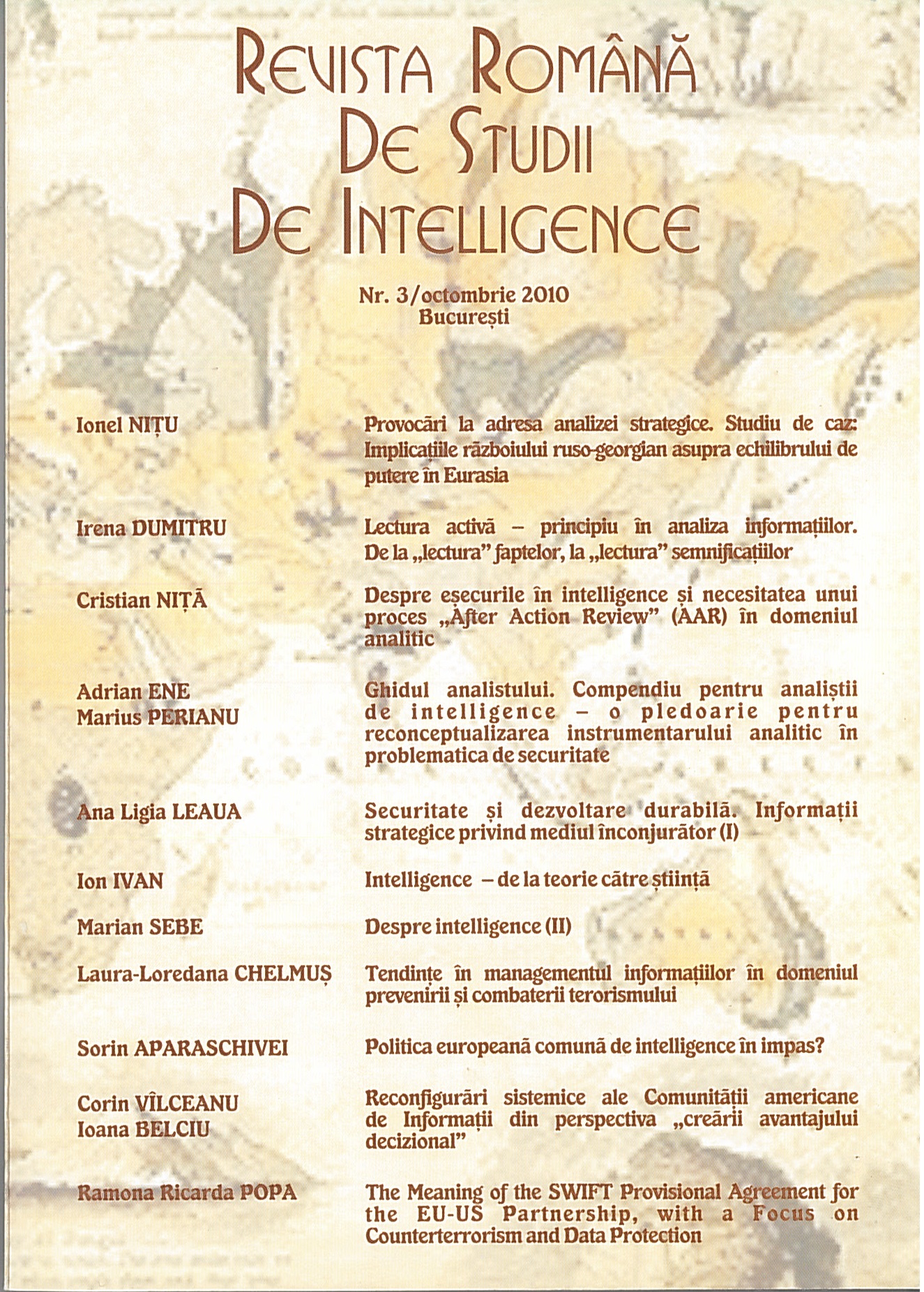Lectura activă – principiu în analiza informaţiilor. De la „lectura” faptelor, la „lectura” semnificaţiilor
Active reading - Principle in Intelligence. From Reading the Facts, to Reading the Signification
Author(s): Irena DumitruSubject(s): Social Sciences
Published by: National Institute for Intelligence Studies
Keywords: intelligence analysis; active reading
Summary/Abstract: Defined as a "process of transforming intelligence to be collected in any way1 in a product which may be used by the decision makers and the military decision-makers" (Shulsky and Schmitt, 2008, 79), intelligence analysis involves two key sub-processes2: reading and drafting. The premise from which we start is that we cannot conceive intelligence analysis without reading intelligence which the analytical product is based on and, subsequently, in the absence of "translating" the conclusions into intelligence ready to be used. This article will refer to the former of the two sub-processes, trying to define those parameters of active reading which should allow drafting an intelligence product: differentiating perspectives, identifying social, political and economic factors, separating facts from opinions and identifying and interpreting the biases existing in the text. We do not read to criticize, to agree or disagree, but to obtain the intelligence from the text. The premise – a text is not a verdict with respect to the given subject, but it is the object of interpreting and evaluating. In other words, getting accustomed to the active reading principles may help us in becoming knowledgeable readers, the more so within the present-day technological environment, when the Internet allows anyone, anytime and anywhere to be able to pose as an information source.
Journal: Romanian Intelligence Studies Review
- Issue Year: 2010
- Issue No: 03
- Page Range: 32-40
- Page Count: 9
- Language: Romanian

